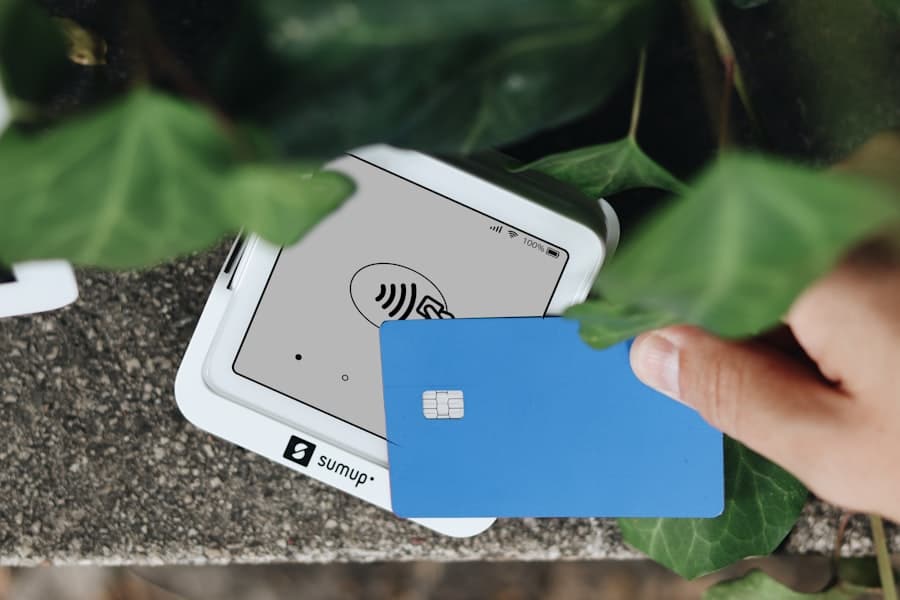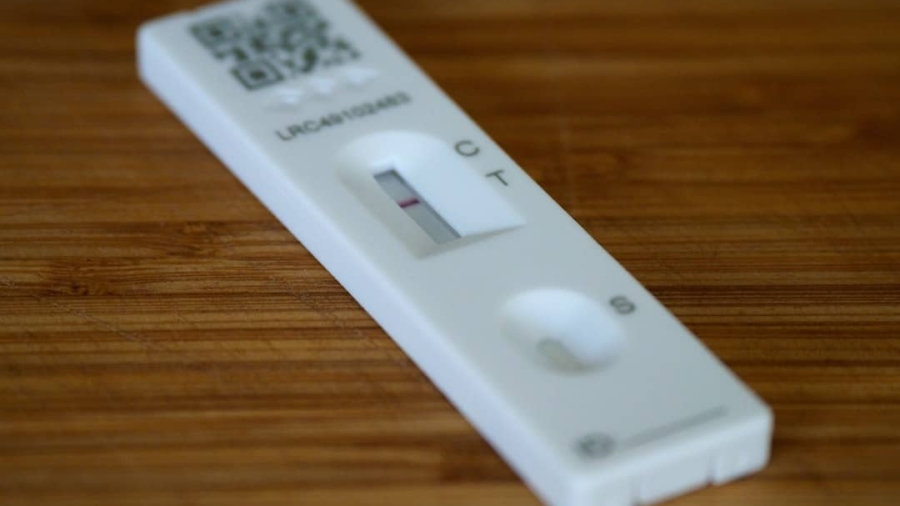Biometric cards represent a significant advancement in the realm of secure identification and payment systems. These cards integrate biometric technology, which utilizes unique physical characteristics of individuals—such as fingerprints, facial recognition, or iris patterns—to authenticate identity. Unlike traditional cards that rely solely on PINs or signatures, biometric cards offer a more robust layer of security by ensuring that the person using the card is indeed its rightful owner.
This technology is particularly appealing in an era where identity theft and fraud are rampant, as it provides a means to verify identity that is inherently difficult to replicate. The design of biometric cards typically includes a small biometric sensor embedded within the card itself. This sensor captures the biometric data of the cardholder at the point of use, allowing for immediate verification.
The data is often stored securely on the card, ensuring that it is not transmitted over networks, which could be vulnerable to interception. As financial institutions and businesses seek to enhance security measures, biometric cards are emerging as a viable solution that combines convenience with advanced technology.
Key Takeaways
- Biometric cards are a type of smart card that uses biometric authentication, such as fingerprint or iris recognition, to verify the cardholder’s identity.
- Biometric cards work by storing the cardholder’s biometric data on the card’s embedded chip and using a biometric reader to match the cardholder’s biometric data with the stored data for authentication.
- The advantages of biometric cards include increased security, convenience, and reduced risk of fraud or identity theft.
- Potential applications of biometric cards include access control, identification, and payment authentication in various industries such as finance, healthcare, and government services.
- Security concerns with biometric cards include the risk of biometric data theft, but solutions such as encryption and tokenization can help mitigate these risks. Implementing biometric cards in financial institutions can enhance security and streamline the authentication process for customers and employees.
- Biometric cards offer enhanced security and convenience compared to traditional payment methods such as cash or magnetic stripe cards.
- The future of biometric cards is promising, with advancements in technology and increasing adoption in various industries, leading to a more secure and efficient authentication process for individuals and organizations.
How do Biometric Cards Work?
The operation of biometric cards hinges on the integration of biometric sensors and secure data processing capabilities. When a user attempts to make a transaction, they must first present their biometric card to a reader. The reader activates the embedded sensor, which captures the user’s biometric data—most commonly a fingerprint.
This data is then compared against the stored template on the card to confirm identity. If the captured data matches the stored template, the transaction is authorized; if not, it is denied. The process is designed to be swift and seamless, allowing for quick transactions without compromising security.
The biometric data is typically encrypted and stored locally on the card, minimizing the risk of exposure during transmission. This localized storage means that even if a card reader were compromised, the biometric data would remain secure. Additionally, many biometric cards are equipped with anti-spoofing technology to prevent unauthorized access through fake fingerprints or other deceptive methods.
Advantages of Biometric Cards

One of the primary advantages of biometric cards is their enhanced security features. By relying on unique biological traits, these cards significantly reduce the risk of fraud associated with lost or stolen cards. Traditional methods such as PINs can be easily compromised through social engineering or brute force attacks, whereas biometric data is inherently more secure due to its uniqueness to each individual.
This makes it exceedingly difficult for unauthorized users to gain access to accounts or make fraudulent transactions. Moreover, biometric cards offer convenience for users. The need to remember complex passwords or PINs is eliminated, as authentication occurs through a simple fingerprint scan or other biometric verification methods.
This ease of use can lead to faster transaction times, enhancing customer satisfaction in retail environments. Additionally, as consumers become more accustomed to using biometric technology in their daily lives—such as unlocking smartphones or accessing secure facilities—the transition to biometric cards feels more natural and intuitive.
Potential Applications of Biometric Cards
The potential applications for biometric cards extend far beyond just financial transactions. In healthcare, for instance, these cards can be used to securely access patient records and verify identities at hospitals and clinics. This ensures that sensitive medical information is only accessible to authorized personnel, thereby enhancing patient privacy and security.
Furthermore, biometric cards can streamline processes in emergency situations where quick access to medical history is crucial. In government services, biometric cards can serve as a reliable form of identification for citizens accessing various services, from social security benefits to voting. By implementing biometric verification, governments can reduce instances of identity fraud and ensure that services are provided only to eligible individuals.
Additionally, in corporate environments, biometric cards can be utilized for secure access control to sensitive areas within facilities, ensuring that only authorized employees can enter restricted zones.
Security Concerns and Solutions
Despite their advantages, biometric cards are not without security concerns. One major issue is the potential for data breaches that could expose biometric information. Unlike passwords that can be changed if compromised, biometric traits are permanent and cannot be altered.
If an individual’s fingerprint data were stolen, it could lead to long-term security risks. To mitigate this concern, robust encryption methods must be employed to protect stored biometric data both on the card and during transmission. Another concern involves the possibility of spoofing attacks, where an unauthorized individual attempts to replicate a user’s biometric traits using fake fingerprints or other means.
To counteract this threat, manufacturers are developing advanced anti-spoofing technologies that can detect whether a fingerprint is genuine or artificially created. These technologies may include liveness detection features that assess whether the fingerprint being scanned comes from a living person rather than a replica.
Implementing Biometric Cards in Financial Institutions

The implementation of biometric cards within financial institutions requires careful planning and execution. Banks and credit unions must invest in infrastructure that supports biometric technology, including card readers equipped with sensors capable of capturing and processing biometric data. Training staff on how to use this technology effectively is also essential to ensure smooth operations during the transition period.
Moreover, financial institutions must address regulatory compliance issues related to data protection and privacy laws when implementing biometric systems. This includes ensuring that customer consent is obtained for collecting and storing biometric data and that robust measures are in place to protect this sensitive information from unauthorized access. Engaging with cybersecurity experts during the implementation phase can help institutions navigate these challenges while establishing a secure environment for their customers.
Biometric Cards vs Traditional Payment Methods
When comparing biometric cards to traditional payment methods, several key differences emerge that highlight the advantages of adopting biometric technology. Traditional payment methods often rely on physical attributes such as signatures or knowledge-based authentication like PINs and passwords. These methods can be easily compromised through theft or social engineering tactics, making them less secure in today’s digital landscape.
In contrast, biometric cards leverage unique biological traits that are inherently difficult to replicate or steal. This not only enhances security but also simplifies the user experience by eliminating the need for memorizing complex passwords or carrying multiple forms of identification. As consumers increasingly prioritize security and convenience in their payment methods, biometric cards present a compelling alternative that aligns with modern expectations.
Future of Biometric Cards
The future of biometric cards appears promising as advancements in technology continue to evolve. As artificial intelligence and machine learning become more integrated into biometric systems, we can expect improvements in accuracy and speed of identity verification processes. These advancements will likely lead to wider adoption across various sectors beyond finance, including travel, healthcare, and government services.
Moreover, as consumer awareness regarding cybersecurity grows, there will be an increasing demand for secure payment solutions like biometric cards. Financial institutions and businesses that adopt this technology early may gain a competitive edge by attracting customers who prioritize security in their transactions. As regulatory frameworks evolve to accommodate new technologies, we may also see standardized practices emerge for the use of biometrics in various applications, further solidifying their role in our daily lives.
In conclusion, while challenges remain in terms of security and implementation logistics, the potential benefits of biometric cards make them an attractive option for enhancing security and convenience in various applications. As technology continues to advance and consumer expectations shift towards more secure solutions, biometric cards are poised to play a significant role in shaping the future of identification and payment systems.
In the rapidly evolving landscape of secure transactions, biometric cards are gaining significant attention for their potential to enhance security and user convenience. As we delve into the intricacies of biometric technology, it’s essential to consider the broader context of digital security and infrastructure. An insightful article that complements this discussion is “How to Choose Your VPS Hosting Provider 2023,” which provides valuable guidance on selecting a reliable virtual private server hosting provider.
For more information, you can read the full article here.
FAQs
What are biometric cards?
Biometric cards are a type of smart card that includes biometric authentication technology, such as fingerprint or iris recognition, to verify the cardholder’s identity.
How do biometric cards work for secure transactions?
Biometric cards work by requiring the cardholder to authenticate their identity using their biometric data, such as a fingerprint or iris scan, before the card can be used for transactions. This adds an extra layer of security beyond traditional PIN or signature-based authentication.
What are the benefits of using biometric cards for secure transactions?
Using biometric cards for secure transactions offers several benefits, including increased security, reduced risk of fraud, and improved convenience for cardholders. Biometric authentication provides a more reliable way to verify the cardholder’s identity, making it harder for unauthorized users to access the card and make fraudulent transactions.
Are biometric cards widely available for use?
Biometric cards are still in the early stages of adoption, but they are being increasingly explored and developed by financial institutions and technology companies. As the technology continues to advance, biometric cards are expected to become more widely available for use in secure transactions.
What are the potential concerns or limitations of biometric cards for secure transactions?
Some potential concerns or limitations of biometric cards for secure transactions include privacy issues related to the collection and storage of biometric data, as well as the need for widespread infrastructure and support for biometric authentication technology. Additionally, there may be challenges in ensuring the accuracy and reliability of biometric authentication in all situations.

